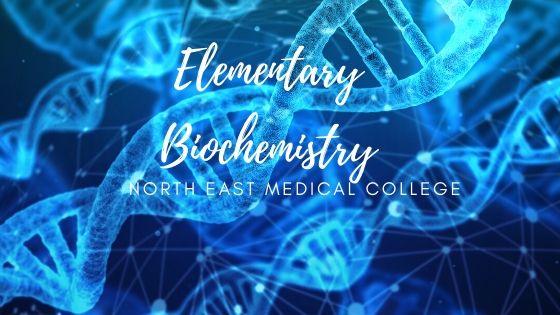
Medical biochemistry questions and answers pdf
Session 2013-2014
2. Define buffer. Enumerate the importance buffer of the body. What is the most important buffer and why?
3.Define and classify carbohydrates. Write down the importance of polysaccharide.
4. Define lipid. Classify fatty acid. What do you understand by denaturation of protein? Write down the function of protein.
5. What is an amino acid? What do you understand by denaturation of protein? Write down the function of the protein.
6. Define enzyme. Mention the classification of enzyme with example.
7. State the law of mass action. Explain it.
8. Write a short note on
a)Membrane Transport
b)Structural formula (Any Two)
Peptide bond
D-glucose
medical biochemistry questions and answers pdf
Session 2014-2015
1. Define buffer. Enumerate the blood buffers. How buffer acts?
2. Define and classify solutions. Difference between colloid and crystalloid.
3. Define and classify carbohydrates. What is the importance of starch and cellulose?
4. What are the functions of protein? Write the nutritional classification of amino acid. What is denaturation?
5. Define and classify lipids. Write the properties of triacylglycerol lipid.
6. Define enzyme. Classify enzyme according to IUBM. What are the factors affecting enzyme activity?
a) D-Glucose
a) Peptide bond
medical biochemistry questions and answers pdf
Session 2014-2015(Supplementary)
1. Define colloid. Give the properties of colloids. How colloids can be separated from crystalloid?
2. Define buffer. Name the blood buffer. Why the bicarbonate buffer is the most important buffer in the body?
3. How protein is organized into different structure? What is the denaturation of protein?
4. Define enzyme. Give the IUBM classification of enzyme with example. What is a coenzyme?
5. Enumerate the essentials of fatty acids with their structure. Mention the biomedical importance of PUFA.
6. Define carbohydrate. Classify monosaccharides. Difference between starch, cellulose, and glycogen.
7. Name the essential amino acids. What is peptide bone? Enumerate the functional classification of protein.
8. Draw the structure of sucrose. Why sucrose is called non-reducing sugar? Discuss in short about mucopolysaccharides.
9. Write short notes on
a) Isomerism
b)Cofactor
medical biochemistry questions and answers pdf
Session 2015-2016
1. Define buffer with a mechanism of action. Enumerate the blood buffer system. Why the bicarbonate buffer system is considered the prime buffer?
2. Justify the pH of pure water is neutral. What is a pH scale? Name some indicators used in the laboratory.
3. Give the properties of colloids. What is a protective colloid? How colloid can be separated from solution?
4. Classify polysaccharides with example. Enumerate shortly about mucopolysaccharides.
5. Define and classify fatty acids. What is meant by O3 fatty acid? Mention the importance of PUFA.
6. Define enzyme and isoenzyme. Classify enzyme with example. Shortly discuss about the factor affecting enzyme activity.
7. Classify protein according to function. Write the biochemical importance of amino acid. What is the denaturation of protein?
8. Define isomer. Draw and level the structure of the following:
9. Write short notes
medical biochemistry questions and answers pdf
Session 2015-2016(Dental Unit)
3. Define carbohydrate. Classify polysaccharide with example. Give the importance of mucopolysaccharides.
4. Define and classify protein according to function. Write the clinical importance of the enzyme.
5. Define and classify fatty acid. Mention the importance of PUFA.
6. Define nuclei acid. Give the difference between DNA and RNA.
7. Define isomer? Draw and level the structure of the following.
8. Write short notes on
a) Isotope
medical biochemistry questions and answers pdf
Session 2017-2018
1. Define acid, base, and pH. Write down the importance of pH.
2. Define buffer. Enumerate the blood buffers. Explain the mechanism of buffer action.
3. Define and classify solutions. Differentiate between colloid and crystalloid.
4. Classify polysaccharide with example. Write the importance of starch and cellulose.
5. Define and classify lipids. What are the properties of TAG?
6. Classify protein according to function. How a peptide bond is formed?
7. Draw and label the structure of DNA. Differentiate between DNA and RNA.
8. Define enzyme. Classify enzyme according to IUB. What are the factors affecting enzymatic activity?
9. Name essential fatty acids with their structures. Write the biomedical importance of essential fatty acid.
medical biochemistry questions and answers pdf
Session 2018-2019
2. Define PH and buffer. Name the blood buffers. Which one is the most important buffer and why?
3. Define isotopes and give the difference between isotopes and isomers. State the biomedical importance of isotopes.
4. Define colloids. write the difference between colloids and crystalloids. What is the biomedical importance of plasma colloid osmotic pressure?
5. What is a carbohydrate? Classify monosaccharides. Write the differences between starch, cellulose, and glycogen.
6. How protein is organized into different structure? What is the denaturation of protein?
7. Enumerate the essential fatty acids with their structure. Give the functions of phospholipid.
8. Define isoenzymes and coenzymes. Write the factors affecting enzyme activity. Briefly discuss any two of them.
9. Mention the structural feature of nucleotides. What are their biological functions?
medical biochemistry questions and answers pdf
You need to click on the link below to view the PDF.
Also read: Biochemistry Questions & Answers
Also read: Question Collection

Comments (0)